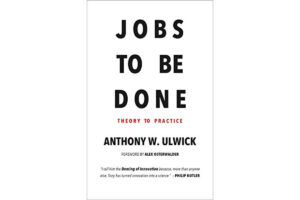The Lean Startup Framework is a methodology that helps startups to create and develop products that customers actually want. It involves a process of building, measuring, and learning in order to achieve validated learning, which is essential for the success of any startup. The Lean Startup Framework has been widely adopted by startups around the world due to its proven effectiveness in reducing risks and increasing the chances of success.
Benefits of using Lean Startup Framework
The benefits of using the Lean Startup Framework are numerous. Firstly, it helps startups to focus on what really matters – creating products that customers want. By using the Build-Measure-Learn feedback loop, startups can quickly iterate and improve their product based on customer feedback, leading to higher customer satisfaction and increased sales.
Secondly, the Lean Startup Framework helps startups to reduce risks and save money. By creating a Minimum Viable Product (MVP), startups can test their product in the market and see if there is a demand for it before investing heavily in development. This reduces the risk of failure and helps startups to conserve resources.
Build-Measure-Learn Feedback Loop in Lean Startup Framework
The Build-Measure-Learn feedback loop is at the heart of the Lean Startup Framework. It involves building a product, measuring its performance, and learning from the feedback in order to improve the product. This process is repeated until the product is optimized for customer satisfaction.
The importance of the Build-Measure-Learn feedback loop cannot be overstated. It allows startups to quickly iterate and improve their product based on real customer feedback, rather than assumptions. This leads to a better product-market fit, higher customer satisfaction, and increased sales.
To implement the Build-Measure-Learn feedback loop, startups should start by defining their hypothesis – what problem they are trying to solve and how they plan to solve it. They can then create a Minimum Viable Product (MVP) and test it in the market to gather feedback from real customers. Based on this feedback, they can make improvements to the product and repeat the process until they achieve a product that satisfies their customers.
Minimum Viable Product (MVP)
A Minimum Viable Product (MVP) is the smallest possible version of a product that can be tested in the market. It is designed to test the product hypothesis and gather feedback from customers. The MVP should have enough features to provide value to customers, but not so many that it takes a long time to develop.
The importance of the MVP cannot be overstated. It allows startups to test their product in the market and gather feedback from real customers before investing heavily in development. This reduces the risk of failure and helps startups to conserve resources.
To create an MVP, startups should start by defining their hypothesis
like, what problem they are trying to solve and how they plan to solve it. They can then create a simple version of the product with only the core features needed to test the hypothesis. The MVP should be designed to provide value to the customer and solve their problem, but not be overly complex or time-consuming to develop.
Once the MVP is created, startups should test it in the market and gather feedback from real customers. This feedback can then be used to improve the product and iterate towards a better product-market fit.
Validated Learning
Validated Learning is the process of using real customer feedback to validate or invalidate a startup’s hypothesis. It involves collecting data from real customers and using this data to make informed decisions about the product.
The importance of Validated Learning cannot be overstated. It allows startups to make data-driven decisions based on real customer feedback, rather than assumptions or guesses. This leads to a better product-market fit, higher customer satisfaction, and increased sales.
To achieve Validated Learning, startups should start by defining their hypothesis and creating an MVP. They can then test the MVP in the market and gather feedback from real customers. This feedback can be used to improve the product and iterate towards a better product-market fit.
Pivot or Persevere
Pivot or Persevere is the process of deciding whether to change course (Pivot) or continue on the same path (Persevere). It involves using data and feedback to make informed decisions about the direction of the startup.
The importance of Pivot or Persevere cannot be overstated. It allows startups to make informed decisions about the direction of the startup based on real data and feedback. This leads to a better product-market fit, higher customer satisfaction, and increased sales.
To decide whether to Pivot or Persevere, startups should start by collecting data and feedback from real customers. This data can be used to make informed decisions about the direction of the startup. If the data shows that the product is not meeting customer needs, then a Pivot may be necessary. If the data shows that the product is meeting customer needs, then Persevere may be the best option.
Conclusion
The Lean Startup Framework is a methodology that helps startups to create and develop products that customers actually want. It involves a process of building, measuring, and learning in order to achieve validated learning, which is essential for the success of any startup.
The Build-Measure-Learn feedback loop is at the heart of the Lean Startup Framework. It allows startups to quickly iterate and improve their product based on real customer feedback, rather than assumptions. The Minimum Viable Product (MVP) and Validated Learning are key components of the Lean Startup Framework, as they help startups to reduce risks and make informed decisions about the direction of the startup.
Pivot or Persevere is the process of deciding whether to change course (Pivot) or continue on the same path (Persevere). It involves using data and feedback to make informed decisions about the direction of the startup.
In conclusion, the Lean Startup Framework is a powerful methodology for startups to create and develop products that customers actually want. By using the Build-Measure-Learn feedback loop, creating a Minimum Viable Product (MVP), achieving Validated Learning, and deciding whether to Pivot or Persevere, startups can increase their chances of success and reduce their risks.



